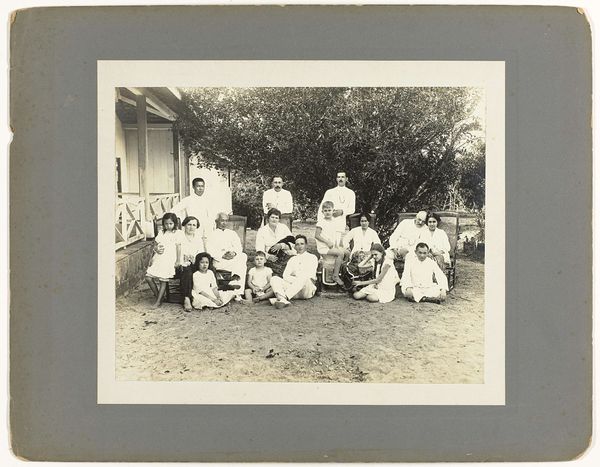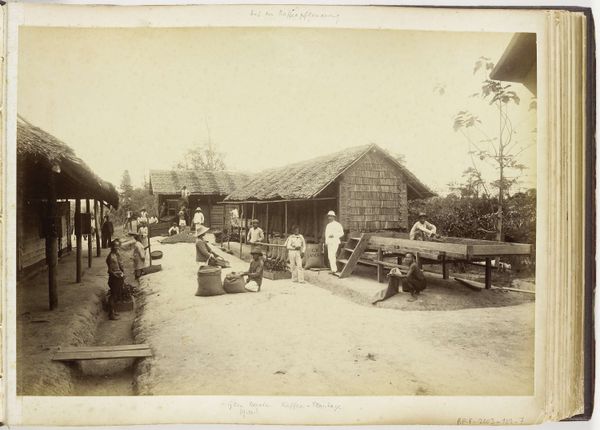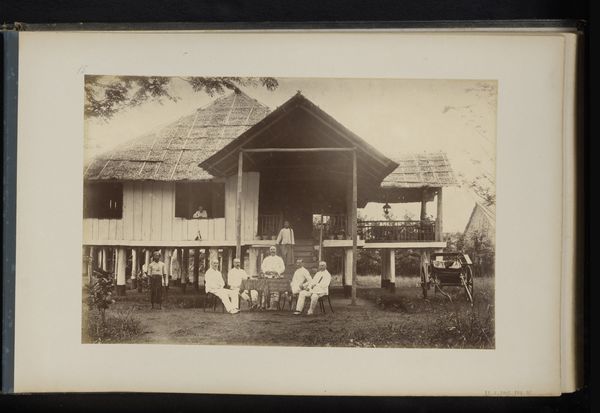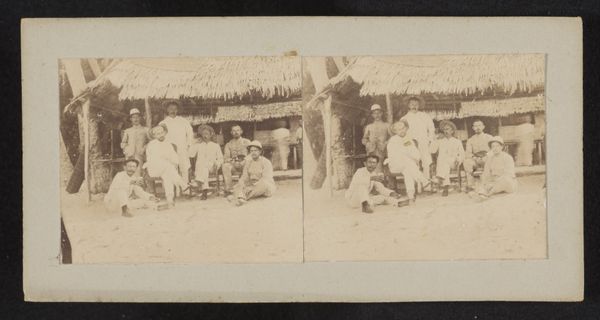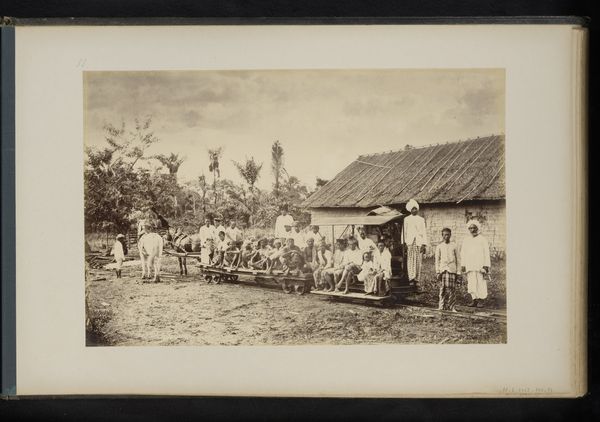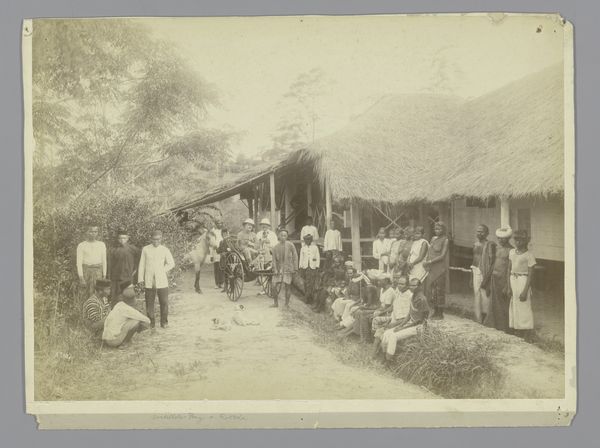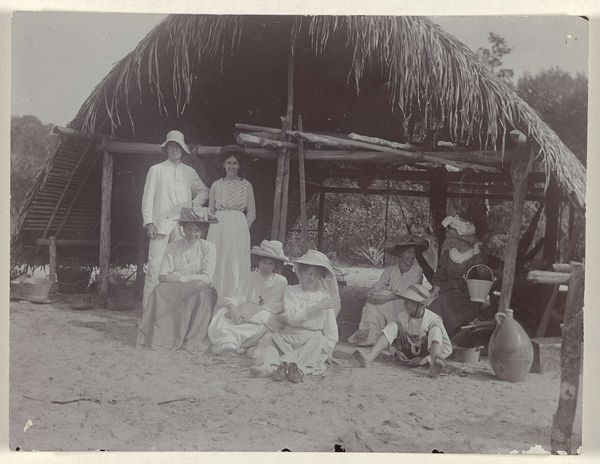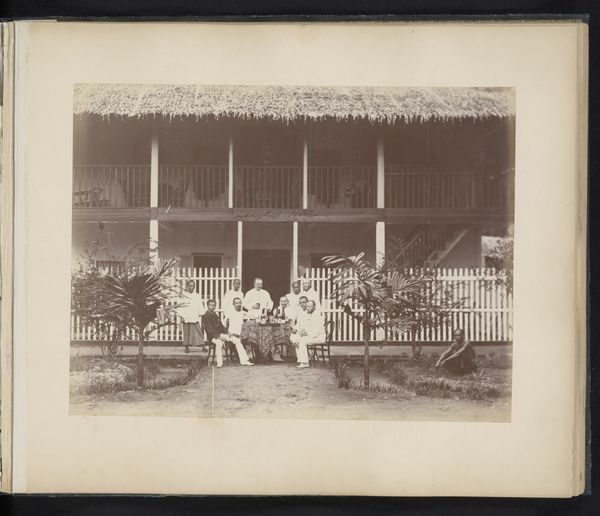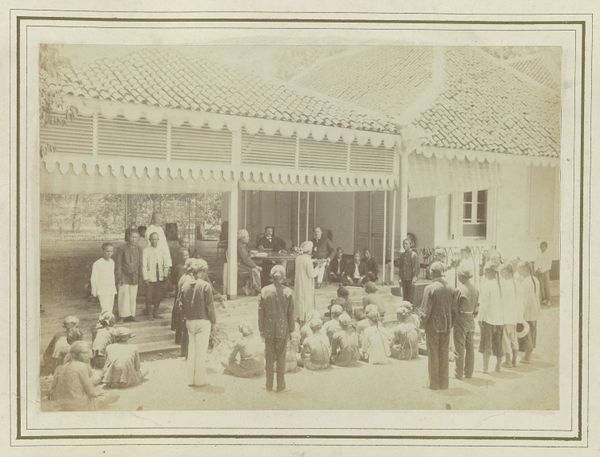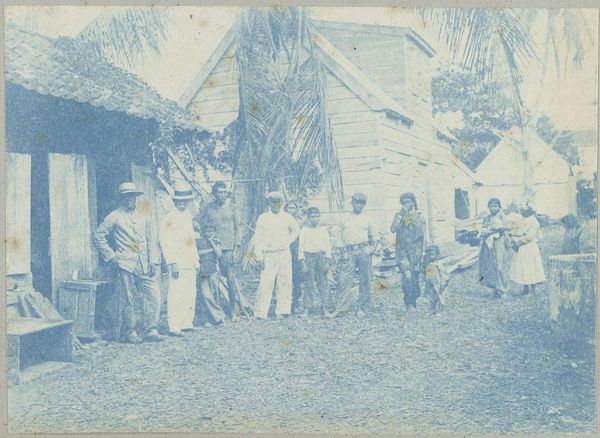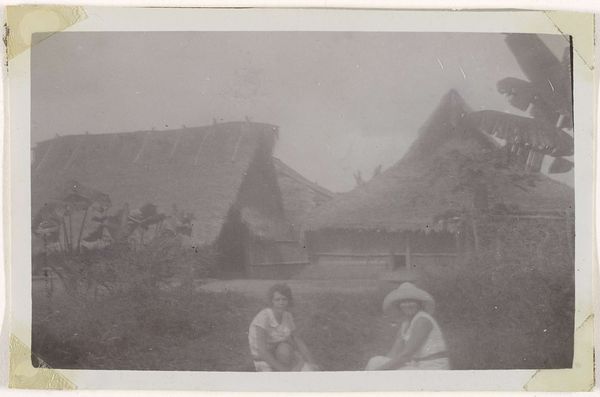
photography, gelatin-silver-print
#
portrait
#
indigenism
#
photography
#
group-portraits
#
gelatin-silver-print
#
realism
Dimensions: height 240 mm, width 288 mm, height 353 mm, width 453 mm
Copyright: Rijks Museum: Open Domain
Curator: Let's examine "Portret van familie Boers met personeel," a gelatin-silver print from 1919 housed here at the Rijksmuseum. Editor: It’s striking—a staged tableau vivant almost. Everyone rigidly posed, yet the weathered facade of the house behind them speaks of a very different reality. The stark white of their clothing amplifies the feeling of colonial imposition on the land. Curator: Absolutely. The photograph is a potent visual document of colonial dynamics in the Dutch East Indies. It presents the Boers family, likely plantation owners, alongside their Indonesian staff. Consider how this photograph operates as both a family portrait and a display of power and social hierarchy, which is reflected, for example, in the arrangement. Editor: Indeed, the composition directs our eye, tracing lines of authority. Notice the contrast of textures—the meticulously tailored clothing against the organic materials of the building. The entire photograph seems to underscore labor relations. What kind of lives were made by the people who inhabited the place shown in this picture? Curator: It’s easy to miss but essential to realize that the home itself represents Indonesian craftsmanship and local building techniques, rendered merely a backdrop. Editor: It’s all these telling background details, carefully chosen by the family to showcase not only their affluence, but also, subtly, the extraction of resources—materials, labor—inherent in their colonial project. We are left with so many questions, but the power dynamics are palpable through material choices alone. Curator: Exactly. Examining photographs like this critically allows us to unpack the layers of identity, privilege, and representation intertwined with Dutch colonialism. It is not just a historical relic, it serves as a lens through which to understand the legacies and structures of power that persist. Editor: This image has truly altered my understanding of colonial representation and what goes into constructing identity—who is at the forefront and who gets delegated to the shadows, who determines how it should all be perceived. Curator: I'm glad it gave you food for thought; there’s always more to learn about the complexities of historical interpretation.
Comments
No comments
Be the first to comment and join the conversation on the ultimate creative platform.
